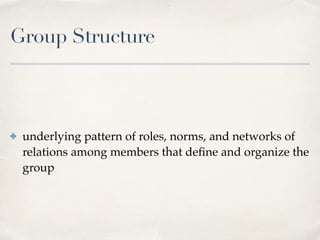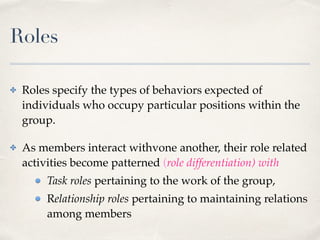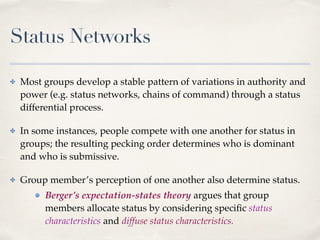Group structure consists of norms, roles, and networks that organize member interactions. Norms develop over time through member imitation and internalization. Roles specify expected behaviors based on member positions. Social network analysis measures group structure through indexes like density and centrality. Status networks develop through competition and stereotyping. Attraction networks form through sociometric differentiation. Communication networks influence outcomes based on their centralization.













